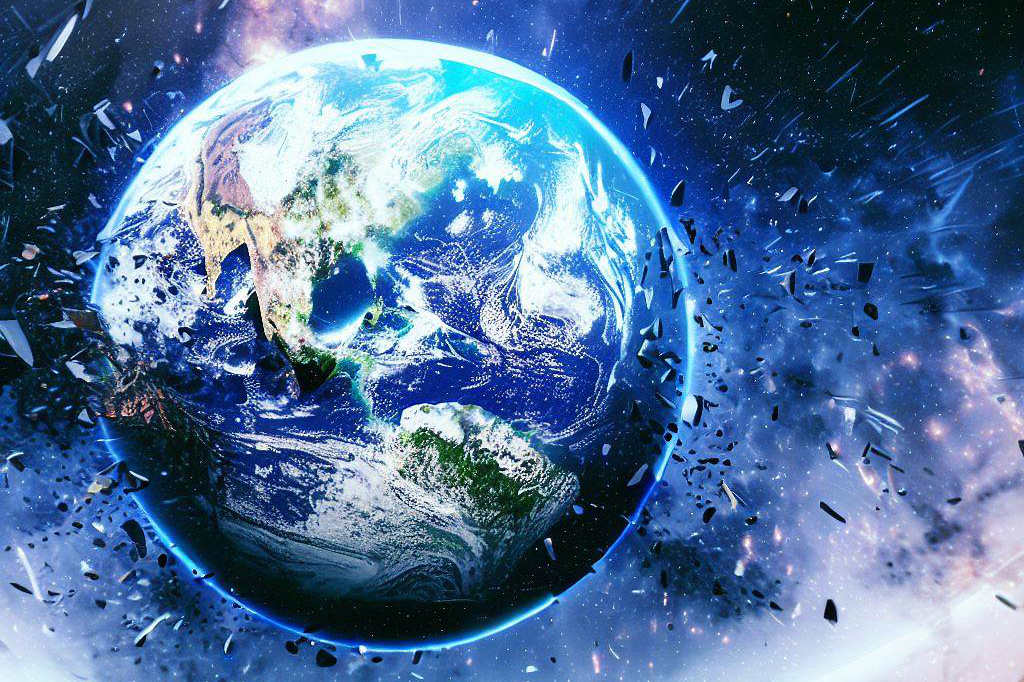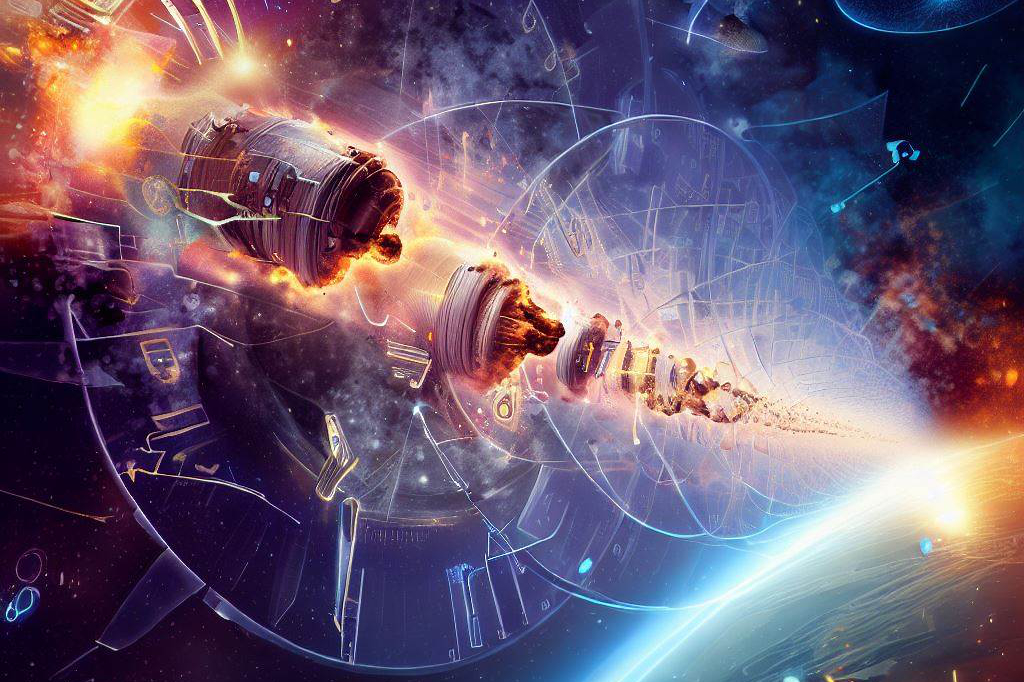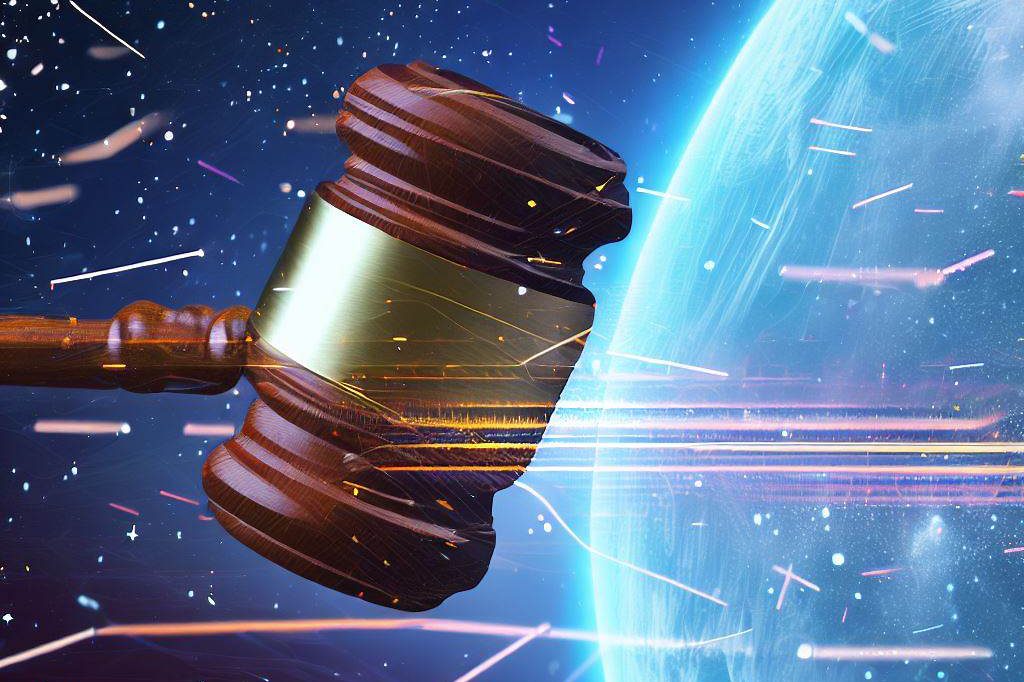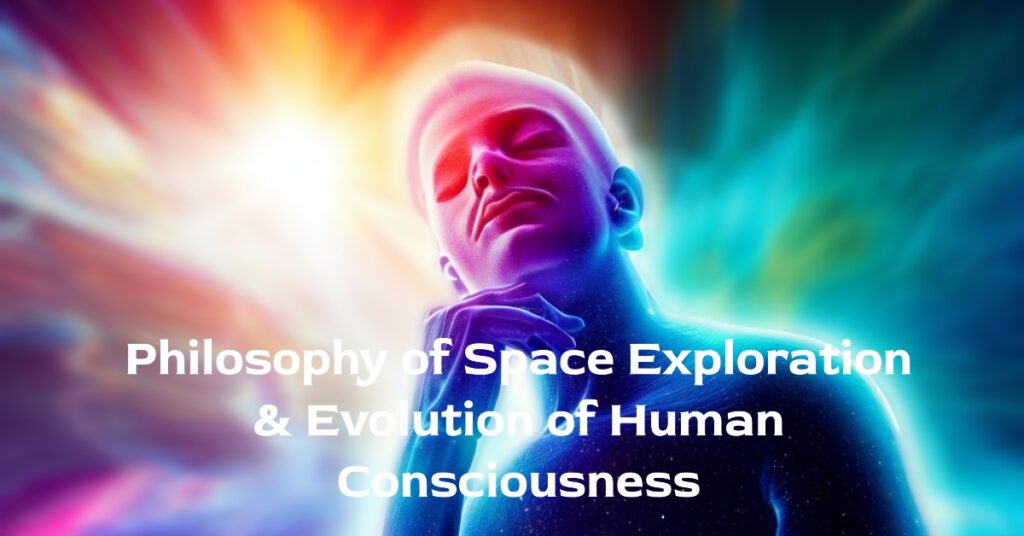The Celestial Conundrum: Unraveling the Responsibility and Regulation of Space Debris
Space exploration and satellite technology have revolutionized our understanding of the universe and transformed various aspects of human life on Earth. However, amidst this progress lies a hidden menace: space debris. As humanity continues to venture further into outer space, the accumulation of space debris has become a pressing concern with severe implications for both current and future endeavors beyond our planet.
A Definition of Space Debris
Space debris refers to defunct human-made objects, ranging from fragments as small as paint flecks to large satellites and spent rocket stages, that orbit Earth or other celestial bodies. These objects are remnants of
- past space missions,
- defunct satellites,
- or result from accidental collisions between operational spacecraft or intentional destructions.
The danger posed by space debris lies in its incredible velocity. Traveling at speeds exceeding 17,500 miles per hour (28,000 kilometers per hour), even the tiniest fragments can cause significant damage in the event of a collision with functioning satellites or manned spacecraft.
This poses threats not only to valuable satellites that enable crucial services such as weather forecasting and communication but also to astronauts aboard the International Space Station (ISS). With thousands of tons of debris circling our planet’s orbit, it is imperative to address this growing issue before it escalates into an uncontrollable predicament.
Growing Concern over Space Debris and Its Implications

The accumulation of space debris has become a cause for global concern due to its potential consequences for space exploration activities and the long-term sustainability of Earth’s orbit. As more nations enter the realm of space exploration and launch their own satellites, the volume of orbital debris continues to surge exponentially.
One major concern is the phenomenon known as “Kessler syndrome,” proposed by NASA scientist Donald J. Kessler in 1978. This theory suggests that a cascading effect could occur if a critical density of debris is reached, triggering collisions that generate more fragments, leading to even more collisions.
If this were to happen, the Earth’s low-Earth orbit could become severely hazardous, rendering space missions and satellite operations exceedingly risky. Additionally, the proliferation of space debris poses a significant economic threat.
Satellite operators are forced to divert time and resources towards avoiding potential collisions or altering orbits due to the presence of debris. This not only hampers the efficiency and reliability of satellite-based services but also incurs substantial costs for operators and, ultimately, consumers.
In light of these concerns and potential risks, it is crucial to explore measures aimed at mitigating space debris and establishing comprehensive laws and policies to manage its growth effectively. Only through international cooperation can we preserve the wonders of outer space while safeguarding our interests on Earth.
The Origins of Space Debris

Historical Context: Early Space Exploration and Satellite Launches
In order to understand the origins of space debris, it is important to delve into the historical context of early space exploration and satellite launches. The space race between the United States and the Soviet Union during the Cold War era intensified the need for satellite technology, resulting in numerous satellite launches by both nations. The first man-made object to orbit Earth was Russia’s Sputnik 1 in 1957, followed by America’s Explorer 1 in 1958.
These breakthroughs paved the way for more advanced satellites, which would eventually contribute to space debris accumulation. As technology advanced, so did our ability to launch bigger and more complex satellites into orbit.
This led to an increase in rocket stages being left behind after deploying their payloads, adding to the growing problem of space debris. Furthermore, during this period, not much thought was given to what would happen once a satellite reached its operational lifespan or malfunctioned, leading to a notable increase in defunct satellites floating aimlessly around Earth.
Causes of Space Debris Accumulation: Accidental Collisions Among Satellites and Rockets
One major cause of space debris accumulation arises from accidental collisions among satellites and rockets in Earth’s orbit. With thousands of operational satellites currently circling our planet, as well as countless fragments from previous launches, there is an ever-present risk of collisions occurring.
These accidents can generate significant amounts of additional debris, that further exacerbates the already critical situation. Accidental collisions often occur due to human error or technical failures during satellite deployments or rocket maneuvers.
Even small fragments resulting from these incidents can present serious hazards since they travel at extremely high velocities relative to other objects in orbit. Such collisions not only create more debris but also increase the risk of future incidents as additional fragments enter unpredictable trajectories.
Causes of Space Debris Accumulation: Intentional Destruction of Satellites
The intentional destruction of satellites also contributes to the accumulation of space debris. In some cases, satellites reach the end of their operational lives or become non-functional, posing a potential threat if left unattended in orbit. To mitigate this risk, controlled deorbit maneuvers are conducted to safely guide these objects into Earth’s atmosphere, where they burn up upon re-entry.
However, there have been instances where satellites were intentionally destroyed in orbit without proper precautions, creating a cloud of fragments that adds to the growing population of space debris. Intentional destruction can occur for various reasons, including military purposes or tests of anti-satellite (ASAT) capabilities.
Due to the fragmentation that explosive devices or kinetic impacts cause, such actions not only produce immediate debris but also have long-lasting effects. The intentional destruction of satellites presents significant challenges when it comes to managing and mitigating space debris since these actions are often beyond the scope of existing regulations and international agreements.
The origins of space debris can be traced back to the early days of space exploration and satellite launches during the Cold War era. Accidental collisions among satellites and rockets have significantly contributed to this problem, with human error and technical failures playing a major role.
Moreover, intentional destruction without proper measures has compounded the situation further. Understanding these causes is vital when assessing responsibility for space debris management and working towards sustainable solutions for a cleaner orbital environment.
Major Contributors to Space Debris

Government Agencies:
National Aeronautics and Space Administration (NASA)
NASA, as the leading space agency in the United States, plays a significant role in space exploration and satellite launches. With its extensive experience in manned and unmanned missions, NASA has immensely contributed to our understanding of the cosmos.
However, this remarkable progress has also led to an increase in space debris. NASA’s involvement in satellite launches dates back several decades.
Their missions have included deploying communication satellites, weather observation satellites, Earth-imaging satellites, and scientific probes into orbit. Unfortunately, some of these missions have inadvertently contributed to the accumulation of space debris.
Satellites reaching the end of their operational life or experiencing malfunctions become useless objects orbiting Earth indefinitely. An example lies with NASA’s Upper Atmosphere Research Satellite (UARS), launched in 1991 to study Earth’s atmosphere.
After completing its mission lifespan of six years, UARS became a defunct object drifting in orbit until it reentered Earth’s atmosphere uncontrollably in 2011. Although efforts are made to minimize debris creation during launches, incidents like these highlight the challenges faced by government agencies.
Russian Federal Space Agency (Roscosmos)
Roscosmos is Russia’s leading space agency, responsible for space exploration and satellite launches. Similar to NASA, Roscosmos has played a crucial role in advancing our knowledge of outer space while unintentionally contributing to the issue of space debris. Russian satellites have been involved in notable incidents that have increased debris levels around Earth.
One such incident occurred on February 10th, 2009, when Kosmos-2251 collided with Iridium-33 commercial communication satellite—resulting in thousands of fragments. This event, known as the first accidental satellite collision, significantly added to the growing debris problem.
It serves as a reminder of the potential consequences when satellites operated by different entities share the same orbit. While government agencies like NASA and Roscosmos have made remarkable contributions to space exploration, it is essential for them to continue developing strategies that minimize the creation of space debris and actively collaborate with other organizations to mitigate its impact on our environment.
Commercial Entities:
SpaceX
SpaceX, founded by visionary entrepreneur Elon Musk, has rapidly emerged as a prominent player in space technology. Their ambitious projects include creating satellite constellations like Starlink—an endeavor aimed at providing global broadband internet coverage from space.
While this innovation brings exciting possibilities for connectivity, it has also raised concerns about the increase in space debris. The Starlink project plans to deploy thousands of small satellites into low Earth orbit (LEO) to form an interconnected network capable of providing internet access worldwide.
However, critics worry that the sheer volume of satellites involved could contribute significantly to space debris accumulation. To address this concern, SpaceX is actively working on designing satellites with built-in propulsion systems for reliable deorbiting once their operational life ends.
Note: At the time of writing, SpaceX has just announced that the StarLink satellites have had to make over 25,000 course corrections to avoid existing debris and other space vehicles – in the last 6 months alone
Other Private Companies Involved in Satellite Launches
In addition to SpaceX, there are various private companies involved in satellite launches, such as Blue Origin and OneWeb. These entities aim to offer innovative solutions for communication services or scientific research opportunities. While their contributions enhance technological progress and foster competition in the industry, it is crucial that they adhere to responsible practices regarding end-of-life disposal and orbital sustainability.
The active involvement of commercial entities brings both benefits and challenges regarding space debris management. As we navigate these advancements in private sector activities, it becomes imperative for stringent regulations and international cooperation to ensure that the cumulative effect of commercial ventures does not exacerbate the existing space debris problem.
International Laws and Policies

1. The Outer Space Treaty of 1967
The Outer Space Treaty, also known as the Treaty on Principles Governing the Activities of States in the Exploration and Use of Outer Space, outlines fundamental principles that guide space activities. Adopted by the United Nations, it serves as a cornerstone for space law.
Although it does not specifically address space debris, it emphasizes principles of peaceful exploration, cooperation among nations, and responsibility for objects launched into space.
This treaty serves as a foundation for subsequent agreements and norms related to space debris mitigation.
2. Guidelines by Inter-Governmental Organizations
To tackle the growing concern of space debris, inter-governmental organizations have developed guidelines to regulate space activities and minimize debris creation.
The United Nations Office for Outer Space Affairs (UNOOSA) has been at the forefront, promoting best practices for sustainable space operations.
For instance, UNOOSA’s Space Debris Mitigation Guidelines provide recommendations on designing satellites with measures to reduce post-mission orbital lifetime and minimize potential collisions.
3. National Policies
Various countries have enacted national policies to address space debris management within their jurisdictions.
For example, the United States through its Federal Communications Commission (FCC) requires satellite operators to implement measures that ensure post-mission disposal or deorbiting within a specified timeframe after completing operations.
Additionally, collaboration between nations has resulted in bilateral or multilateral agreements addressing specific aspects of space debris mitigation. Examples include agreements between Russia and China on notification coordination regarding planned launches or operational maneuvers to ensure safety in orbit.
Final Thoughts

As humanity continues its exploration of outer space and our dependence on satellite technology grows ever stronger, managing the menace of space debris becomes paramount. While no comprehensive international treaty specifically governs this issue yet, existing frameworks such as the Outer Space Treaty and guidelines by inter-governmental organizations provide a basis for responsible conduct.
National policies and collaboration between nations also play crucial roles in mitigating space debris. By adhering to these laws, guidelines, and policies, nations and space agencies can actively contribute to reducing the creation of new debris and minimizing potential collisions.
This concerted effort will ensure the long-term sustainability of space exploration and satellite operations for future generations. With continued advancements in technology and increased awareness about the importance of space debris management, there is hope for a cleaner orbital environment that enables safe exploration and supports our quest for knowledge beyond our planet.

C M, a seasoned editor, journalist, and consultant, is deeply fascinated by the convergence of technology, space, and the future of humanity.
With a particular interest in transhumanity, futurology, and the philosophical and ethical dimensions of these domains, C M serves as the lead contributor to SpaceSpotlight and TranscendSphere.
When not penning insightful articles on these rapidly evolving fields, C M indulges in their love for podcasts and books, proudly embracing their status as a ‘Happy Nerd Extraordinaire!’



